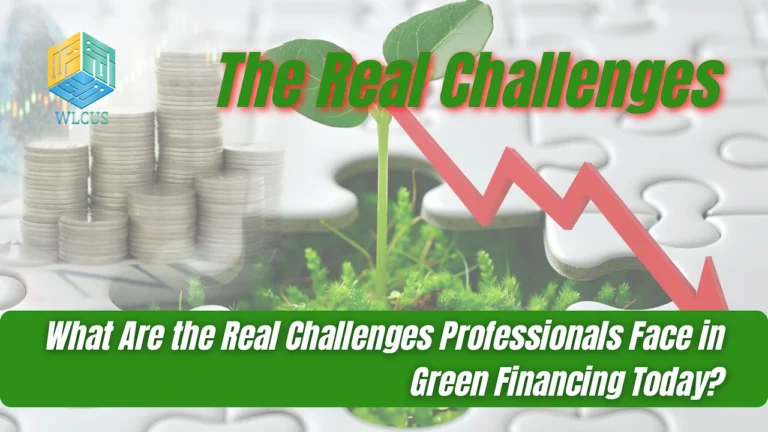What Are the Real Challenges Professionals Face in Green Financing Today?

Green financing has emerged as a vital pillar in global efforts to transition towards sustainable development and a low-carbon economy. Yet, the professionals responsible for implementing and managing green finance continue to face a complex array of challenges from regulatory inconsistencies to a lack of reliable data and institutional hesitancy. As pressure mounts on corporations and banks to meet Environmental, Social, and Governance (ESG) targets, the cracks in green financial systems are becoming more visible.
1. Regulatory Inconsistencies and Global Fragmentation
One of the most cited issues in green financing is the lack of a unified global regulatory framework. While the EU Taxonomy provides detailed guidance for classifying sustainable economic activities, other regions operate under different, sometimes conflicting, standards. The United States has its Inflation Reduction Act and evolving SEC disclosure guidelines, while Asia-Pacific markets, like China, have their Green Bond Endorsed Projects Catalogue.
This lack of alignment leaves multinational corporations and international banks such as HSBC, JPMorgan Chase, and BNP Paribas juggling multiple ESG frameworks. Professionals often find themselves burdened with compliance overheads, legal uncertainty, and increased audit requirements.
2. Ambiguity in Environmental Impact Measurement
Another critical challenge is accurately measuring the environmental impact of financed projects. Professionals must quantify metrics such as CO₂ reduction, energy efficiency gains, or biodiversity preservation often with incomplete or unverifiable data. This gap is especially problematic for banks like Citi, Deutsche Bank, and development institutions like the World Bank, which must justify their green lending portfolios to investors, regulators, and the public.
Impact assessments often rely on outdated baselines, assumptions, or third-party certifications that vary widely in credibility. This makes it difficult for professionals to assess risk properly or structure reliable financial models for sustainability.
3. Greenwashing and Reputation Risks
As demand for ESG-aligned financial products rises, so does the risk of greenwashing misrepresenting the environmental value of projects or investments. Professionals working in sustainability divisions within companies such as Shell, Total Energies, and even Tesla have faced scrutiny over whether their projects truly meet green finance criteria.
This puts financial officers, sustainability managers, and ESG analysts under increasing pressure to verify claims while facing reputational exposure if projects fail to meet advertised standards.
4. Insufficient Pipeline of Bankable Green Projects
A less-discussed yet highly practical issue is the lack of scalable, bankable green projects. While there is plenty of capital available through green bonds, climate funds, and public-private partnerships, there’s a shortage of well-structured proposals that meet banks’ risk and return expectations.
Even institutions like Goldman Sachs and BlackRock which have made public commitments to ESG investing report that a significant portion of funds remain unallocated due to project quality and lack of standardization.
5. Skill Gaps and Institutional Inertia
Many finance professionals are trained in traditional financial models and lack specific knowledge about green project risk assessments, ESG metrics, or evolving regulatory standards. As a result, green finance divisions within companies like Siemens, Enel, and Schneider Electric are scrambling to hire or train personnel who can bridge the technical and financial aspects of project evaluation.
Banks also face institutional resistance to change. Shifting lending models, adjusting internal KPIs, and integrating ESG into risk analysis is not only time-consuming it requires top-down strategic alignment, which many institutions lack.
An Urgent Need for Capacity Building and Structural Reform
The global push toward net-zero emissions and sustainable development cannot succeed without a fully functional and efficient green finance ecosystem. But that will require not only regulatory harmonization and better impact measurement tools, but also a concerted effort to train professionals, align incentives, and build institutional frameworks that support long-term environmental and financial success.
Green financing is no longer just a trend it’s a necessity. To make it effective, professionals across banks, corporations, and investment firms need more clarity, support, and collaboration.
Call to Action
If your team is navigating the evolving world of green finance and facing these challenges firsthand, consider investing in structured learning like the Green Finance Masterclass 2025. Designed for finance professionals, this program offers real-world tools and frameworks to help you build credible, bankable, and compliant green finance strategies.
